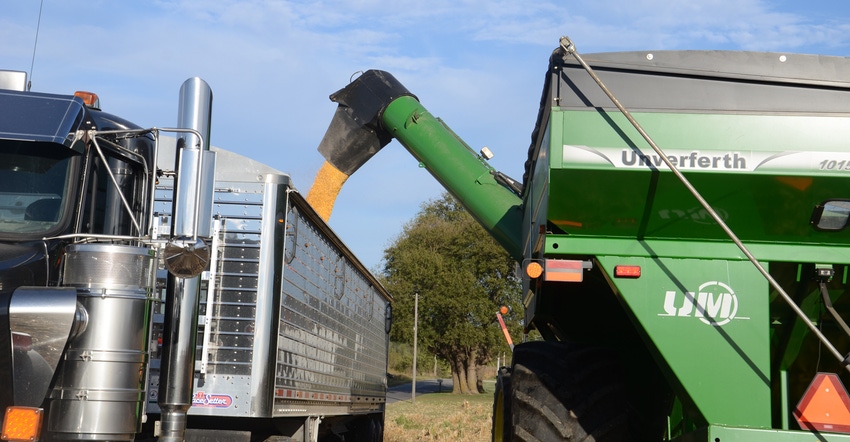September 24, 2018

If you have high test weight, are you guaranteed high yield? The simple answer is no.
In spite of foliar fungicide applications this summer, we saw a lot of disease pressure on corn. Gray leaf spot and northern corn leaf blight developed, and some fields were hit by diplodia and gibberella ear rots and stalk rots. Weather was favorable for these disease organisms, affecting both yield and test weight.
Growers most often discuss grain moisture and test weight during harvest, especially if there’s low moisture and high test weight. Grain moisture is important because of drying costs. But why is test weight important, especially if there isn’t a direct link to yield?
Test Weight 101
Here are some facts about test weight and why it’s important:
• Definition. The test weight of grain is a ratio between weight and volume. It’s measured as the weight of grain that fills a quart container. There are 32 quarts in a bushel basket.
• A 56-pound standard. Corn grain is marketed based on a 56-pound test weight per bushel.
• No. 1 corn. Corn with 56 pounds per bushel is considered No. 1 yellow corn, and 54 pounds per bushel is called No. 2 yellow corn — both at 15% moisture.
• More than bragging rights. Growers can haul more bushels of high test-weight grain in the truck per trip than low test-weight grain. Grain with test weight lower than 56 pounds may be discounted by elevators, but no credit or premium is given for higher test weight.
• Grain quality factor. Grain with higher test weight generally has better quality.
• Genetic tie. Hybrid genetics play an important role in test weight determination. However, there’s no correlation between a hybrid’s test weight and yield potential. Sometimes high-yielding hybrids have average test weight. As a plant breeder, I developed a couple of high-yielding hybrids with high test weight.
• Moisture factor. As moisture goes down, test weight increases. Dry matter weighs more than water.
• Eye appeal. Higher test-weight grain with orange color has greater eye appeal. Its integrity is maintained during shipping and is generally preferred by customers in foreign countries.
• Another genetic factor. Planting hybrids with genetic potential for higher test weight will generally yield grain with higher test weight if kernels are fully mature.
• Early planting. Early planting helps hybrid maturity and leads to higher test weight. Our studies indicate that corn planted before May 10 in the central Corn Belt has test weight that’s 1 to 1.5 pounds per bushel higher than late May or June plantings.
• Shrink factor. Test weight is a volume-weight relationship. Drier grain shrinks and gives higher test weight because you can pack more kernels into a bushel basket.
• Temperature factor. Higher temperature with ample moisture tends to increase test weight if kernels are mature.
• Drought stress. Drought stress tends to decrease test weight because it affects the photosynthetic process.
• Disease impact. Late-season leaf diseases such as northern and southern corn leaf blights, gray leaf spot, anthracnose leaf blight and Goss’s wilt decrease test weight because they interrupt grain fill and proper grain development.
• Ear diseases. Ear rot diseases such as diplodia, gibberella and aspergillus will have a negative effect on test weight.
Nanda is president of Agronomic Crops Consultants LLC. Email [email protected] or call 317-910-9876.
About the Author(s)
You May Also Like






